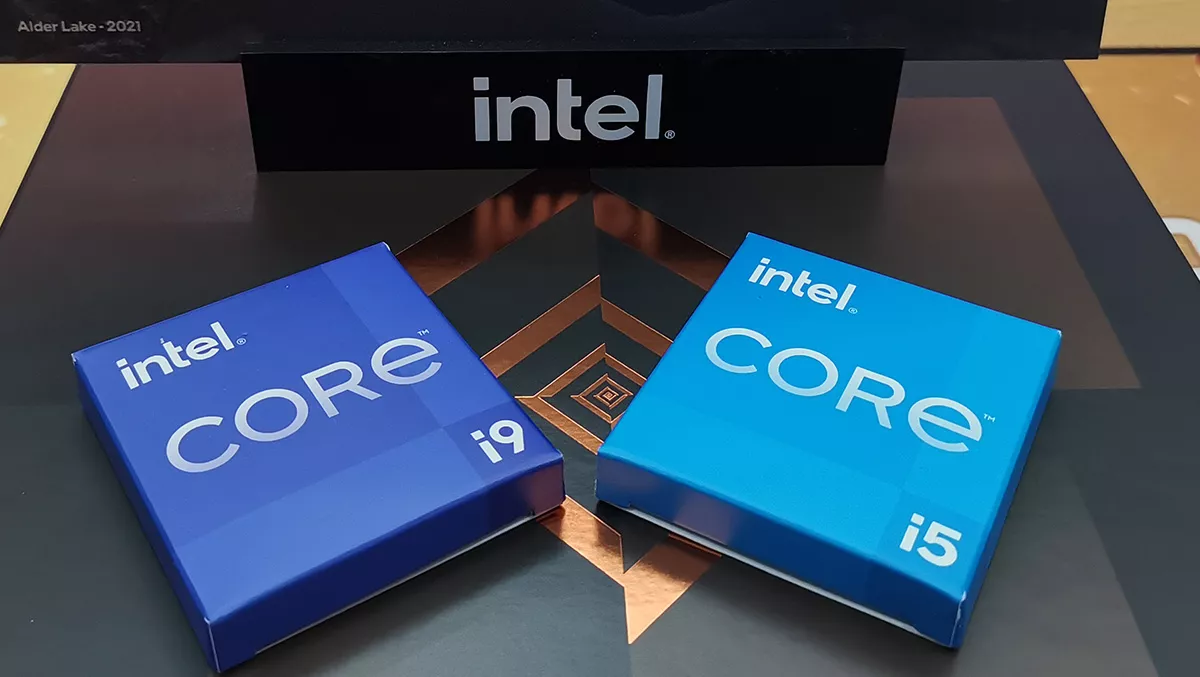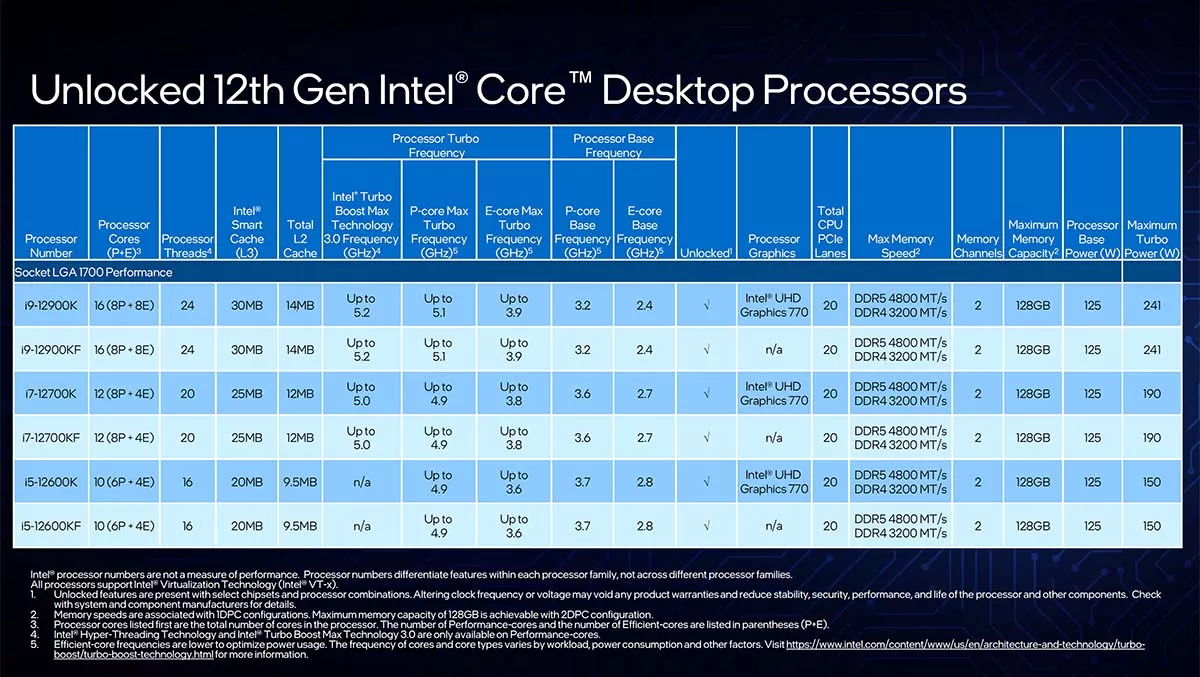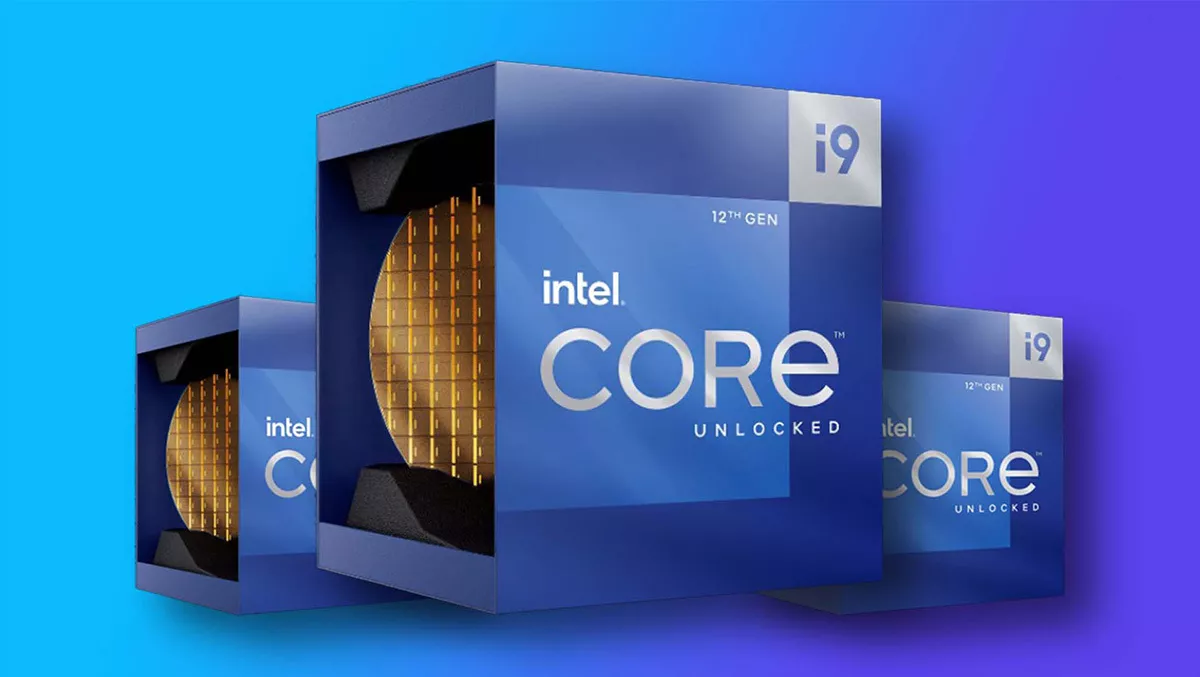Intel has released details regarding its new 12th-Gen Alder Lake CPUs and the Z690 motherboard chipset.
Despite being able to stare at a couple of Intel's new 12th-Gen Alder Lake CPUs for longer than I'm allowed to tell you, it's only recently that we now know what the craic is with these new chips.
First, though, let's talk about Intel's 11th-Gen Rocket Lake CPUs released at the end of March this year. That's seven months ago, by the way. In my tests, the i9-11900K fared slightly better than the older i9-10900K, but the reduction of cores from the 10th-Gen's ten to eight cores marked it down. I also found the 11900K running a bit hot, likely because Intel was pushing the 14nm silicon to its limits, and perhaps the reason for the reduced core count design.
I actually found, for gaming, the i5-11600K gave a better bang for its buck. It also seemed more obliging with some of my ham-fisted overclocking.
The 11th-Gen support for PCIe 4.0 did not go unnoticed, getting some phenomenal speeds from a WD Black SN850. However, that SN850 has now been repurposed as a storage upgrade for the PS5.
To be honest, nothing about the i9-11900K made me want to replace the Z490 motherboard and i9-10900K in the review rig with the Z590 board and 11th-Gen CPU. I could even have just replaced the 10900K with the 11900K, but I really didn't see the point.
Whilst they'll never say, I can imagine Intel would like to draw a line under their 11th-Gen range. With AMD a serious contender, the Alder Lake's Intel 7 process (which is a 10nm process) and performance hybrid architecture may be able to retake the CPU crown.

The 12th-Gen CPU cores are split between P-cores (performance cores) and E-cores (efficient cores). The P-cores look after the gaming and productivity workload in the foreground, with the E-cores managing background tasks. The on-chip Intel Thread Director allocates the workload, monitors each thread, and reports back to the OS.
The CPUs available at launch are the unlocked i9-12900K, the i7-12700K, and the i5-12600K. The CPUs are also available without the Intel UHD Graphics 570 integrated GPU, identifiable by the KF suffix. The i9s have a total of 16 core (8P + 8E), the i7 12 cores (8P + 4E), and the i5 10 cores (6P +4E).
So, we are likely looking at better performance vs power consumption. Intel is suggesting a 50% increase for the i9-12900K over the 11900K. Intel is also suggesting that gamers will see around a 20% increase in FPS across many games (based on test results running at 1920x1080 with an RTX 3090).
Intel suggests that new package optimisations using thin solder thermal interface material will improve the CPUs' thermal properties. This, in turn, may improve overclocking potential over the 11th-Gen CPUs. The new Intel Extreme Tuning Utility 7.5 may allow even the most inexperienced overclocker to get a little bit more from their investment.
As well as the theoretical performance boasts (which we hear with the launch of every new CPU iteration), the Alder Lake CPUs actually introduce new technology into desktop PCs. Most notably is DDR5 SDRAM compatibility.
This is a big deal. DDR4 SDRAM has been around since the stone age (well, 2014), so it's about time that we saw DDR5 moving from servers applications to desktop PCs. With DDR5, we should see higher bandwidths, lower power consumption, and, of course, performance improvements.
We have been lucky for the past few years when it comes to PC upgrades. 8th and 9th Gen CPUs had the same LGA1156 socket and could both run on a Z390 motherboard. Similarly, 10th and 11th-Gen CPUs were both used LGA1200, making them compatible with both select Z490 and Z590 motherboards. Even LGA1151 coolers worked with 11th-Gen CPUs.

Whilst complementing a new CPU with its corresponding motherboard has been optimal, we've had some grace in being able to replace CPUs and motherboards separately. We've even been able to use our DDR4 SDRAM and CPU coolers for quite a few chip iterations.
That all stops now.
To run a 12th-Gen CPU, you will need to purchase a Z690 motherboard. At launch, only boards with the Z690 chipset will be available. Other motherboards based on the 600-series will be released next year, but for early adopters, only boards based on Intel's flagship Z690 chipset are available. And they are not cheap, even at the lower end.
You are going to also need to ensure that your cooler is compatible with the new LGA1700 socket. Even with an adapter, older coolers may not have cooling plates of a size and shape that can provide optimal coverage for the new chips' elongated design.
With the Alder Lake CPUs supporting DDR5 and DDR4, early upgraders will be presented with a conundrum. With the launch of the new CPUs, Z690-based motherboards will be available supporting DDR5 or DDR4. Intel suggests that the 12th-Gen CPUs are better optimised for DDR4 as well as DDR5, but of course, to get the most out of the new chips, DDR5 is preferable. Being relatively new, DDR5 modules are expensive compared to DDR4. There's also likely to be supply issues. Early adopters that already have some spare DDR4 modules may find buying a Z490 DDR4 motherboard a better option.
After the perfunctory performance of the Rocket Lake CPUs over their predecessors, I'm quite looking forward to Intel's 12th-Gen Alder Lake CPUs. They seem to be a significant improvement, the likes of which we've not really seen from Intel for a few years.
The Intel 12th-Gen CPUs and third-party Z690 motherboards will be available from 5th November.



